Into Before you begin, however, please note that the leaked document is still a version of “draft”, so some of the details may have been overlooked / wrong as we will note below.
Into Let’s start first with the back cover, as seen in the previous article, seems to be removable. In reality, however, the back cover of 5 Nexus (Nexus 4, 2013) can be removed with a special tool (or object) very thin, so it is easily removable as you can think of. Even the battery is not removable, as it is classified as “ embedded “, that is incorporated, non removable fact.
Into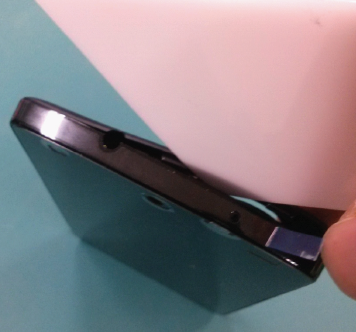
Into Continuing with the reading and analysis of the manual, we pass to the autonomy of the device. In standby mode, the Nexus 5 (Nexus 4, 2013) be able to hold out for 14 days and a half coverage under any network (3G, LTE, GSM) .
Into Regarding the talk time, however, the manual provides us with the following information:
Into addition would be the same (or almost) the charging time of the smartphone compared to Nexus 4 : when off, takes 3 hours and 30 minutes to load ! Recall that the battery is 2,300 mAh , while the one on the Nexus 4 is 2,100 mAh . Below we list all the full features of the smartphone learned from the manual:
Reload
To the uninitiated, Slimport is a standard for interfacing the device with an external monitor (TV for example) through the microUSB port, in practice it makes a mirroring of the display , or the entire display of our device is displayed on another screen (such as the TV, for example).
Coming Into the size, we realize that there may be other error was a draft. The size of the 5 Nexus (Nexus 4, 2013) would be in fact identical to those of Nexus 4 :
As we know, in fact, the size confirmed by other documents are as follows:
Into As for the confirmation of certain technical specifications, below we can see the amount of RAM and the frequency of reporting: 2 GB of 800 MHz , a high frequency value for a mobile device only reach devices like LG G2 and Galaxy Note 3 . Among other things, the manufacturer of the RAM for the 5 Nexus (Nexus 4, 2013) is Hynix , which produces RAM for PC. In addition, you can also see that there are 32 GB of internal memory , and in this case the manufacturer would be the famous SanDisk . For the first time, therefore, a smartphone Nexus would be equipped with a cut of up to 16 GB memory (finally, we would add).
Into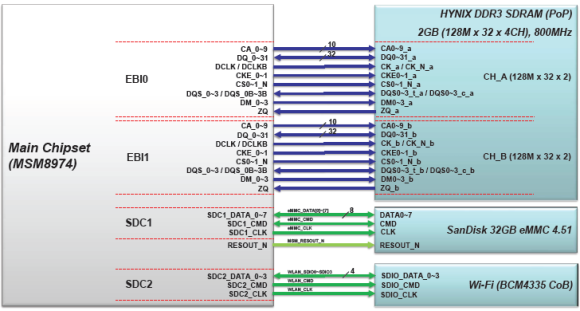
Into The document, then, there are those that show the app Quick Start , or those 5 classic icons remain the same as those of Android 4.3 Jelly Bean :
- class=”c3″> Camera – Chrome – Applications – Messages – Phone
![]()
Into The fields to be included in Address Book , however, would be the following:
Also confirmed is the search contacts directly by typing the numbers on the numeric keypad, feature introduced with Android 4.3 Jelly Bean :
Into 
Into Unfortunately there is to report another contradiction that is the one you see in this picture:
Into 
We expect the opposite in fact: this obviously Bluetooth and FM Radio absent , as usual Google .
Into The manual then focuses on ‘NFC , which would operate in three possible ways:
- class=”c3″> Mode Card: Smart Card compatibility with mobile devices (acknowledgment within 20 mm)
- Reading Mode: reads data from a tag recognition (by 20 mm)
- mode peer-to-peer communication between devices (recognition within 5 mm)
We now come to an interesting point. The battery indicator appears to have suffered a big step forward, since now the battery seems to be displayed in a much more accurate than today, as you can see from the following picture.
Into 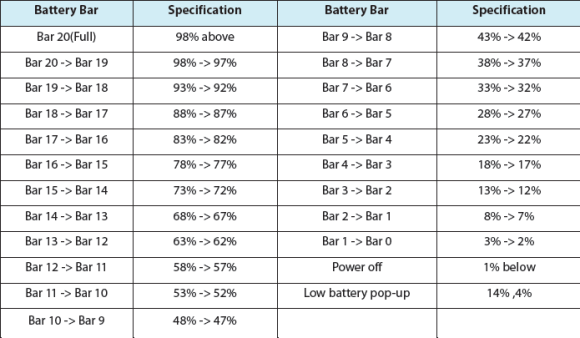
In practice, at each variation of percentage of charge, corresponds to a different level of the indicator. This also happens today but with a much smaller number of changes in the level of the indicator.
Into Let us now turn to the analysis hardware itself.Into The chip to encode the audio should be the same used on the Galaxy S4 LTE-Advanced , smartphone which is currently only available in selected markets. In particular, the chip to encode the audio should be the WCD9320 made by Qualcomm :
Into
Into Below you can see a picture of the speaker compartment (right) and the chip located on the motherboard of the device (left):
Into 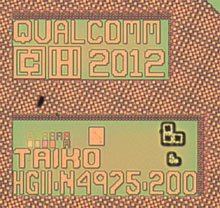
Into addition, since we are in the field of speaker, it should be noted that the 5 Nexus (Nexus 4, 2013) is well equipped with 2 speakers places in the lower part of the frame. This would be to confirm again that Google wanted to standardize design and details of this smartphone with those of Nexus 7 2013 . It is expected, therefore, that the Nexus 5 has stereo speakers which will play a strong audio clean.
Into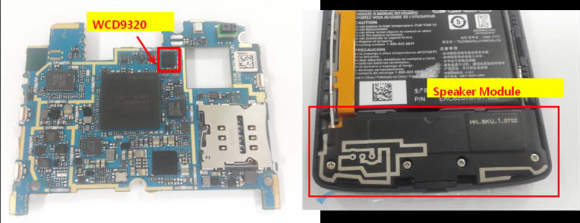
Into Doing a little ‘research on the net, we also obtained information on the main microphone smartphone. The manufacturer is the GoerTek and in particular it is a MEMS microphone , the same as that found on ‘ iPhone . Here’s a picture:
Into 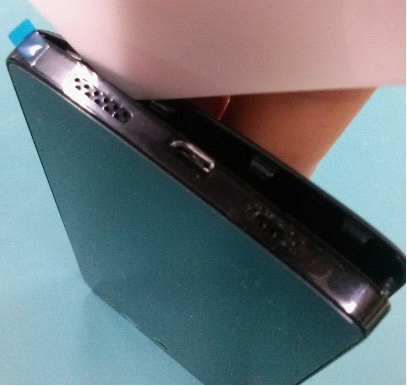
Into The second microphone of the smartphone, as well as on the Nexus 4 , is positioned in the upper part of the device to the back, as shown in the following image:
Into 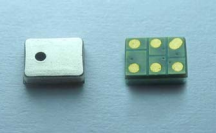
Into Regarding the entrance to the headphone jack, Google and LG would be entrusted to Fairchild Semiconductor , a manufacturer of a jack that has 4 poles. If you’re curious, here you can find the technical manual of this component, and below you will find an image:
Into 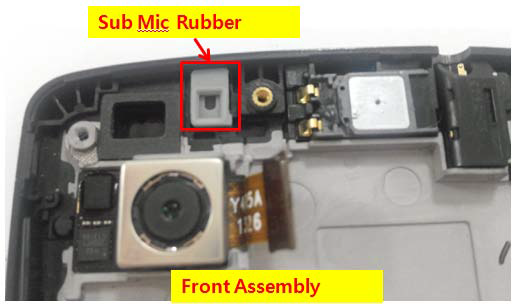
Into Turning to the camera, it is confirmed what has long been rumored about the optical stabilization: this is absolutely the optical Image Stabilizer to the main camera 8 megapixel , as shown in the following image is from the service manual:
Into ![]()
Into The front camera, however, is by 1.3 megapixel (1.26 to be precise) and is not OIS . As for the gyroscope and accelerometer , it’s all housed in a single chip that is the ‘ MPU6515 made by InvenSense .
Let us now Into the LTE frequencies . Interestingly, the 5 Nexus (Nexus 4 2013) is perfectly compatible with the LTE frequencies European and Asian , in particular with those Italian . Below we present the frequencies supported by the LTE Nexus 5 and the ones we have in Italy , so that you can see how the device is perfectly usable even with our LTE Country :Into Here we find a new uniformity with the Nexus 7 2013 , also equipped with fully functional LTE in Italy.
In particular, the 5 Nexus (Nexus 4 2013) would be equipped with LTE MIMO (Multi Input Multi-Output), that would be equipped with two antennas for the 3G ‘s LTE , both used depending on the required frequencies: for low frequencies is used Ant # 1 (the first antenna), for high frequencies is used, instead Ant # 2 (the second antenna). Thus, depending on the frequency bands, the different antennas are used as shown in the following image. This allows obtaining better performance both in 3G and in 4G.
Into
Into continue speaking now of sensors . The new smartphone from Google should be the ones you see in the following image, and also that we reported:
- class=”c3″> Accelerometer, Gyroscope, Digital Compass, Proximity, Brightness and Pressure
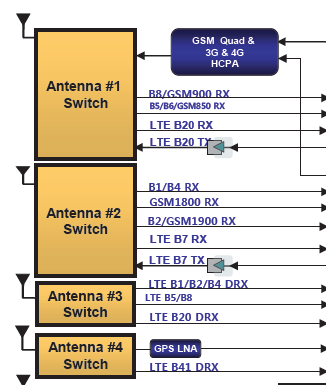
further information would reach about another confirmation of the ‘ USB OTG as you can see from the following picture, which shows that there is a chip (pink right) for temperature monitoring battery and for the management dell’OTG. In particular, from ‘ OTG_EN see an arrow that reaches out to a controller: the direction of the arrow indicates that, through the microUSB port, you can interface to storage devices or other devices:
Into 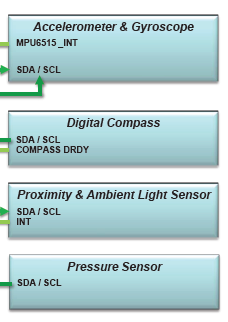
Into Let us now turn to the physical side, or one of the external device. Here we can see a detail that covers the outer edge: the following image, as well as the position of the slide to insert the microSIM , you can also see how the board appears shiny. Of course we can not know the material, but we can see how the Power a little higher up seems to be made of opaque plastic, unlike the Power on the glossy Nexus 4 .
Into 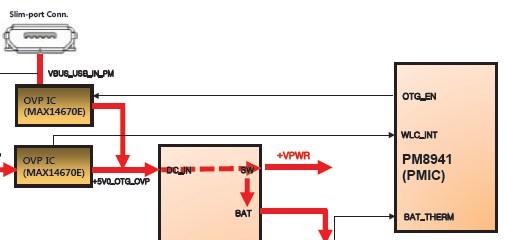
Into It would seem also confirmed the big circle around the rear camera and the materials of the back cover, which would seem identical to those on the Nexus 7 2013 .
Into 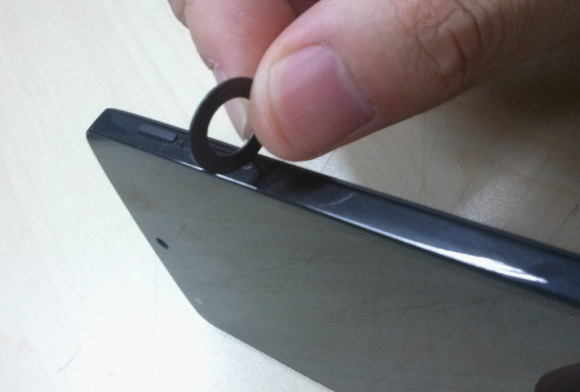
Into Finally, we note that the back cover is made up of well- 15 joints , as can be seen from the following picture:
Into 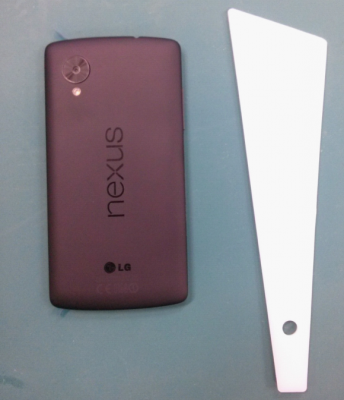
Into Within the document there are many circuit diagrams that show we have avoided, since it is too complex and not regarding the scope of this article.
Into The service manual has confirmed virtually all the technical characteristics of the 5 Nexus (Nexus 4, 2013) of which we had come in possession not many days ago, and there has also provided new information about the internal components and some features of the smartphone.
Into What about this 5 Nexus (Nexus 4, 2013) after learning this information? Surely the new smartphone from Google and also can be very much more “ moddabile ” (passateci the term) compared to Nexus 4 present, given the stereo speakers, USB OTG, support Slimport and other new hardware.
Into It is not yet clear whether the smartphone seen in the pictures of this article will be final and design in the final version or is it just a prototype, but we hope to learn about them very soon. To find the first impressions of those who say they have tried the Nexus 5 , you can go to our related article.
You may view the latest post at
http://darenil89.pusku.com/?p=2565
You received this e-mail because you asked to be notified when new updates are posted.
Best regards,
darens
darens@darenil89.pusku.com
No comments:
Post a Comment